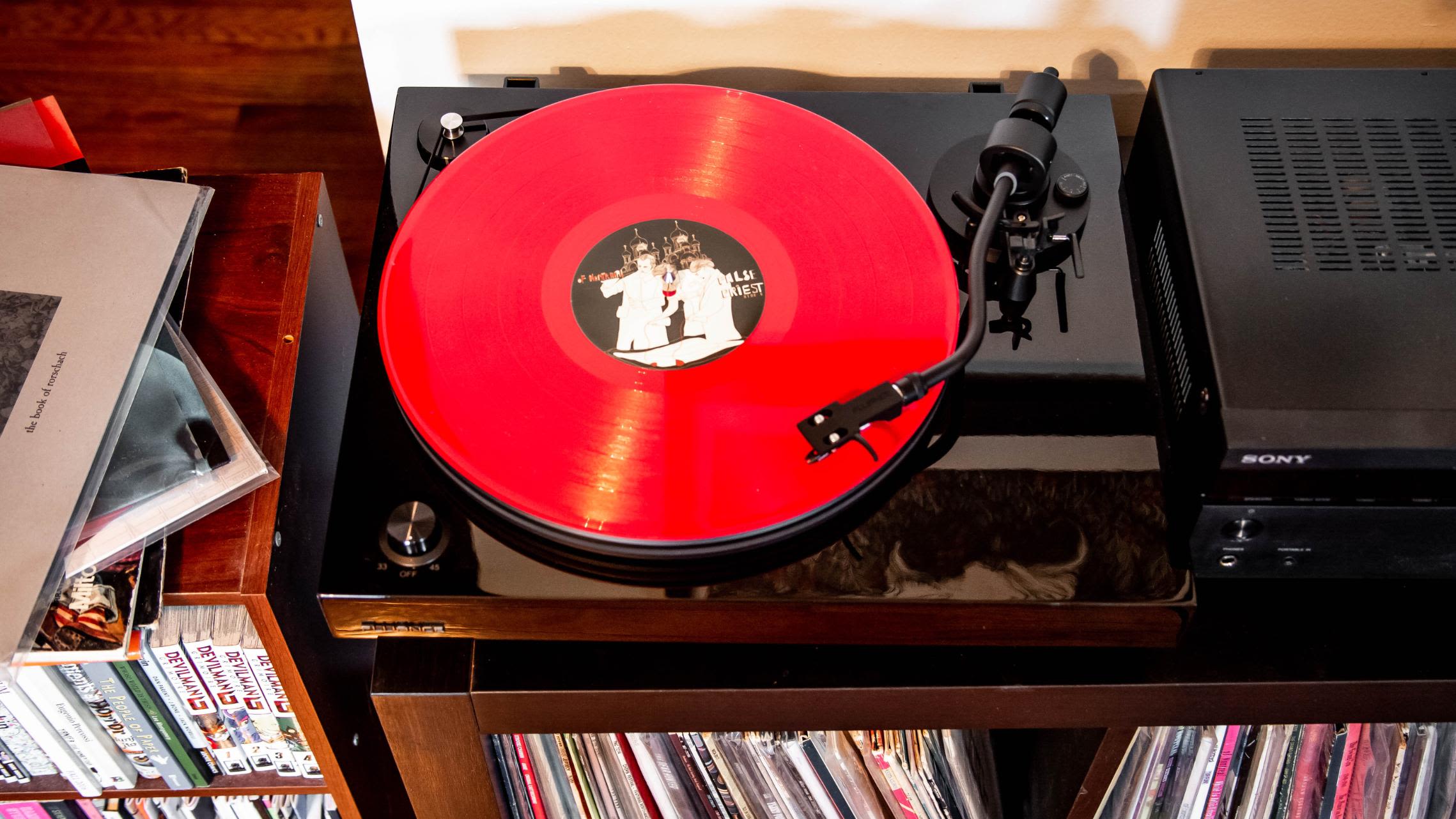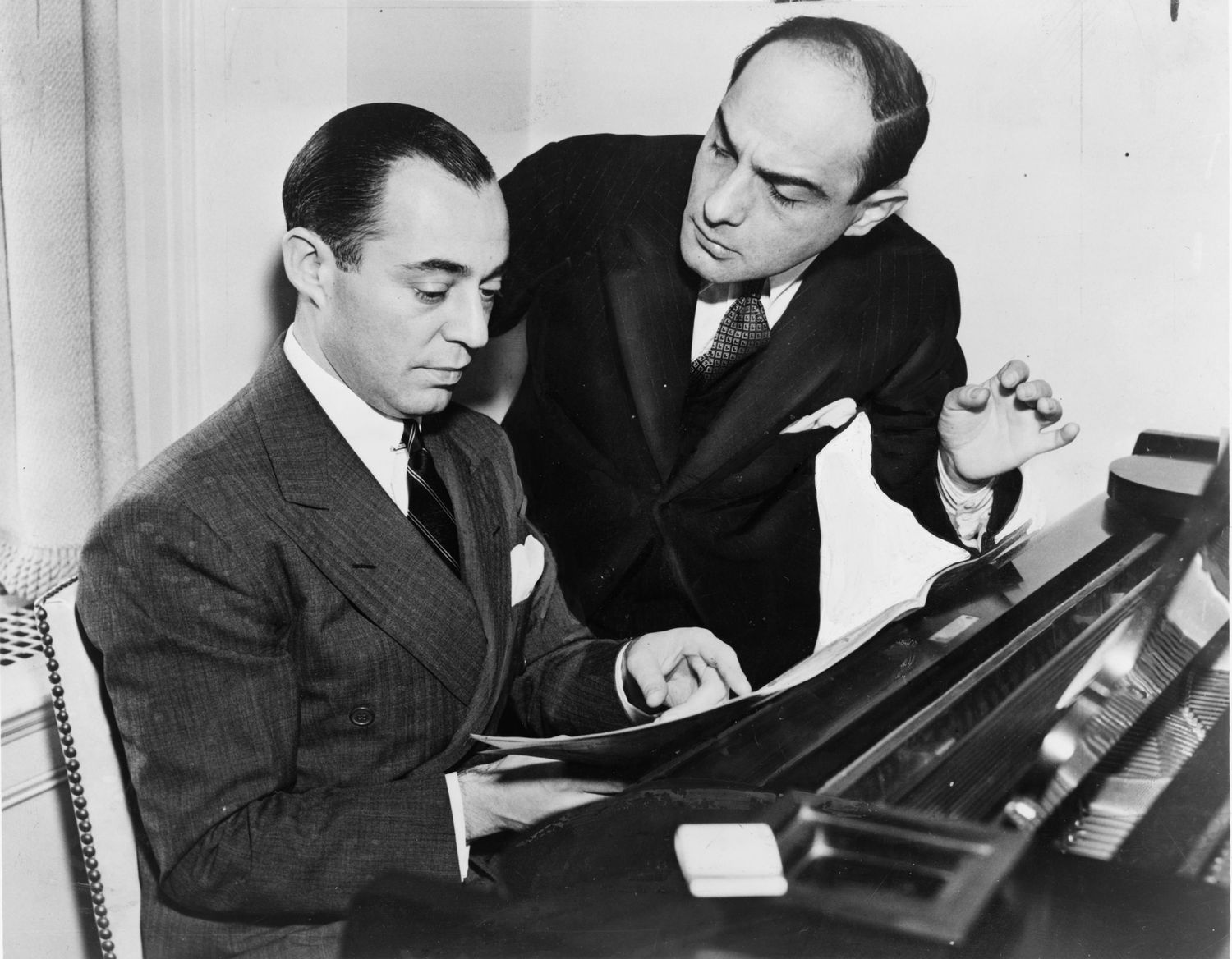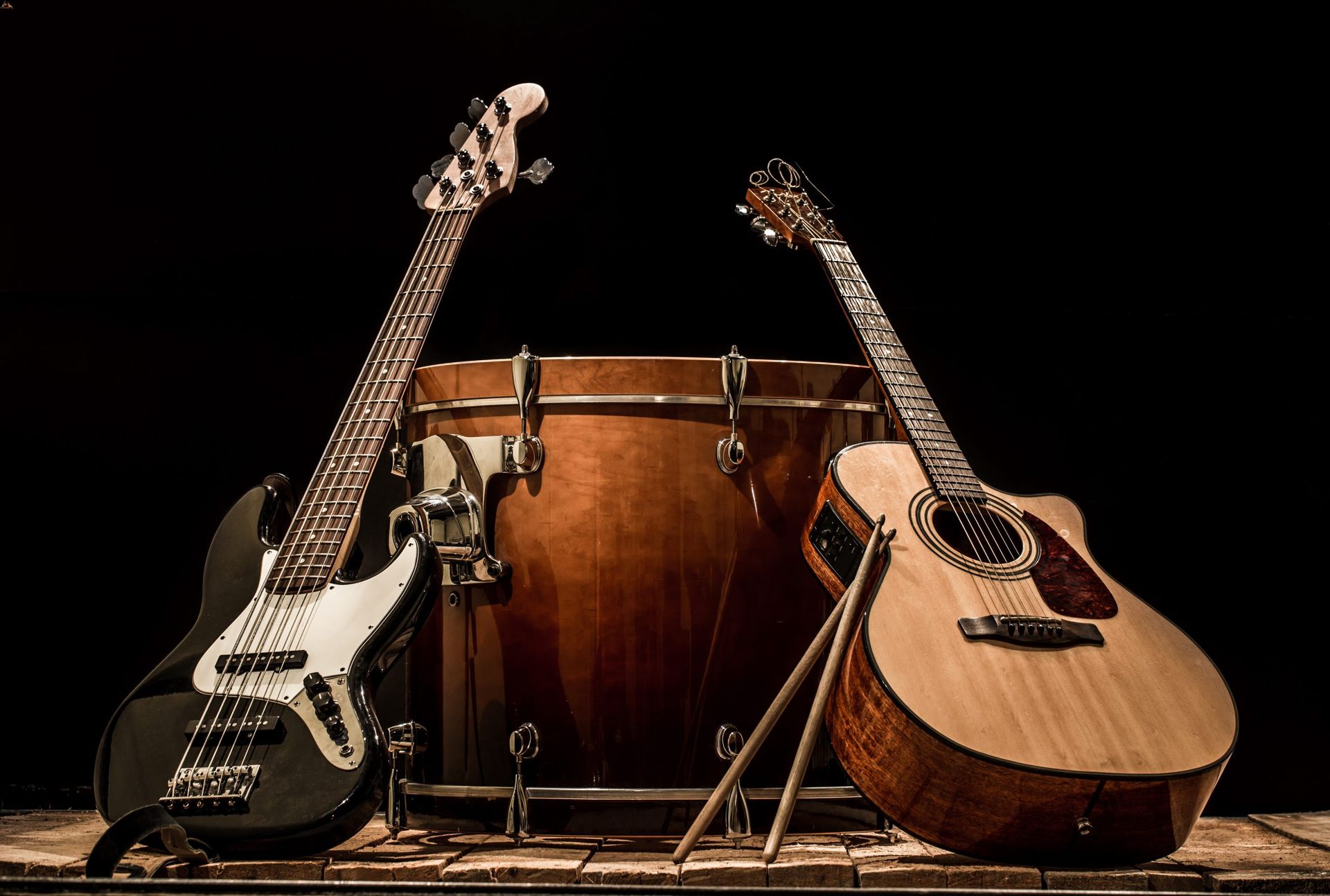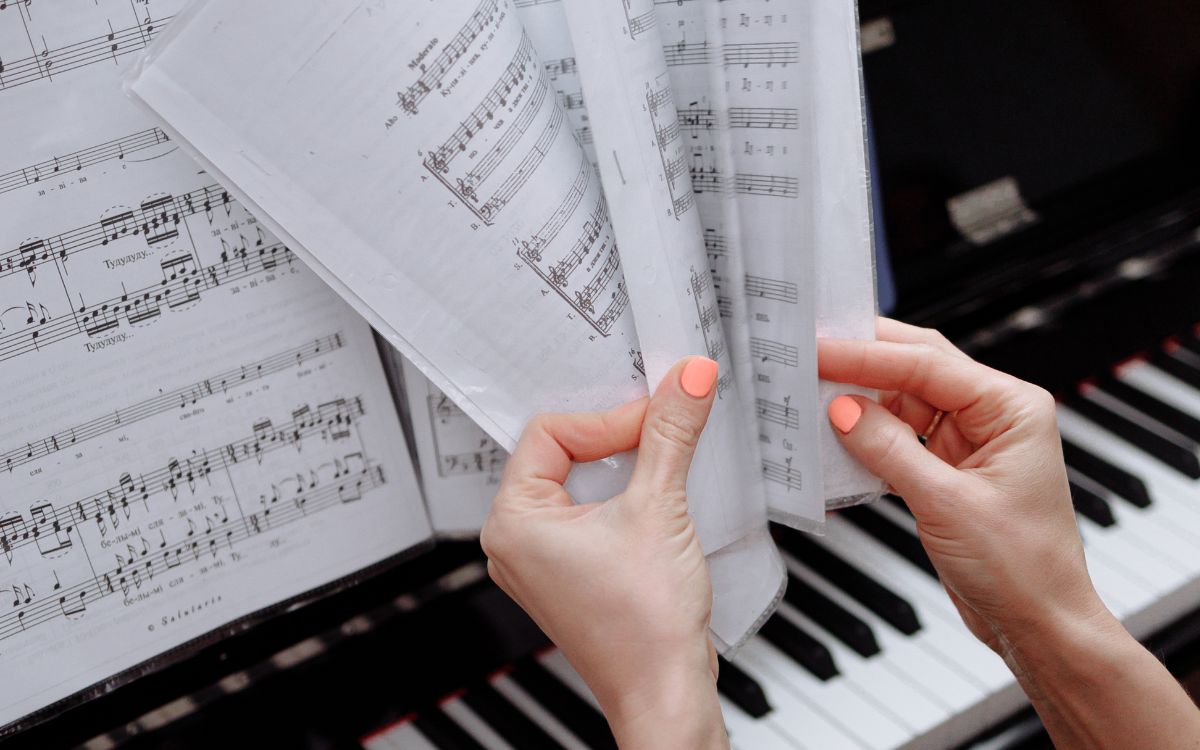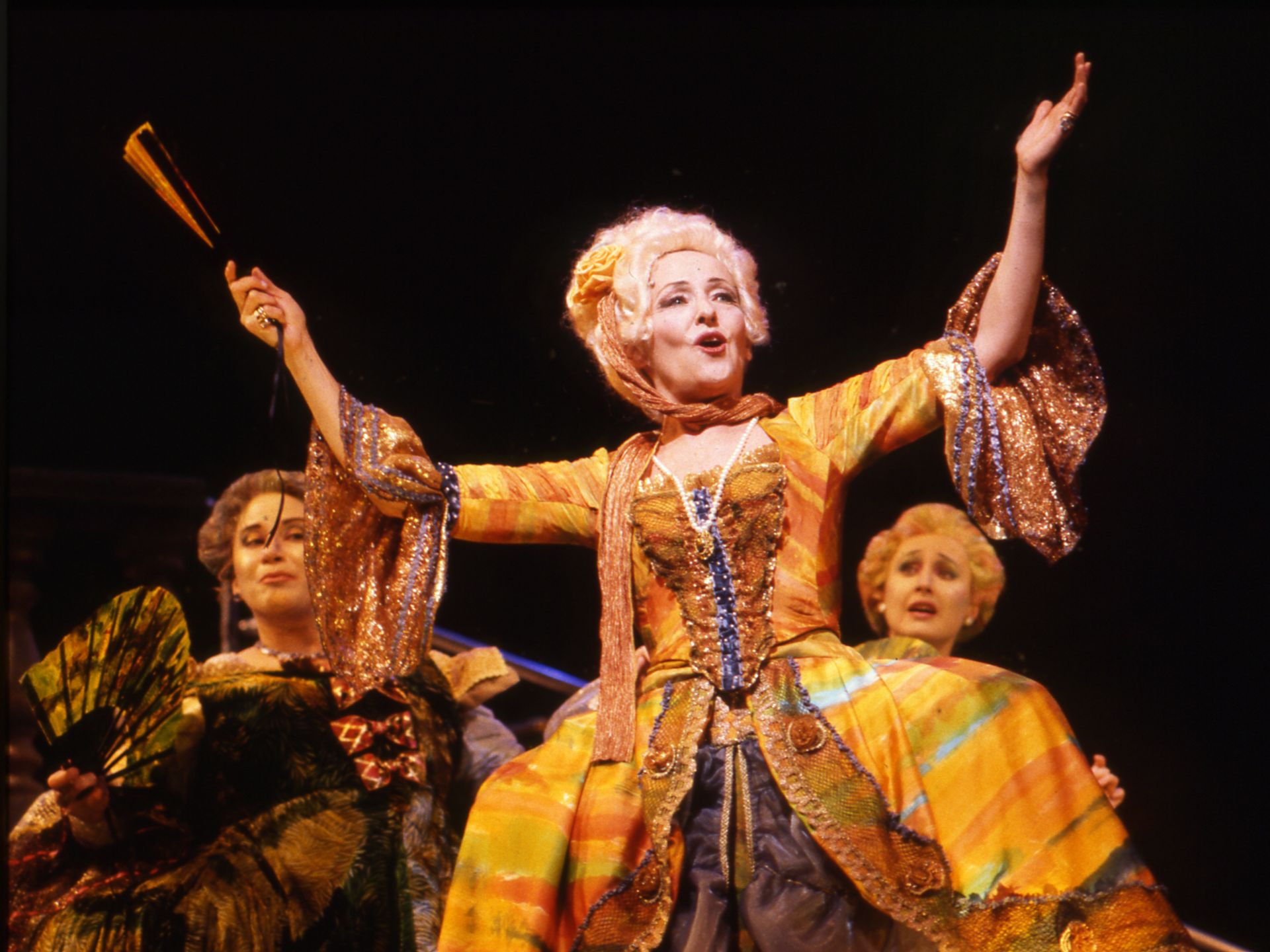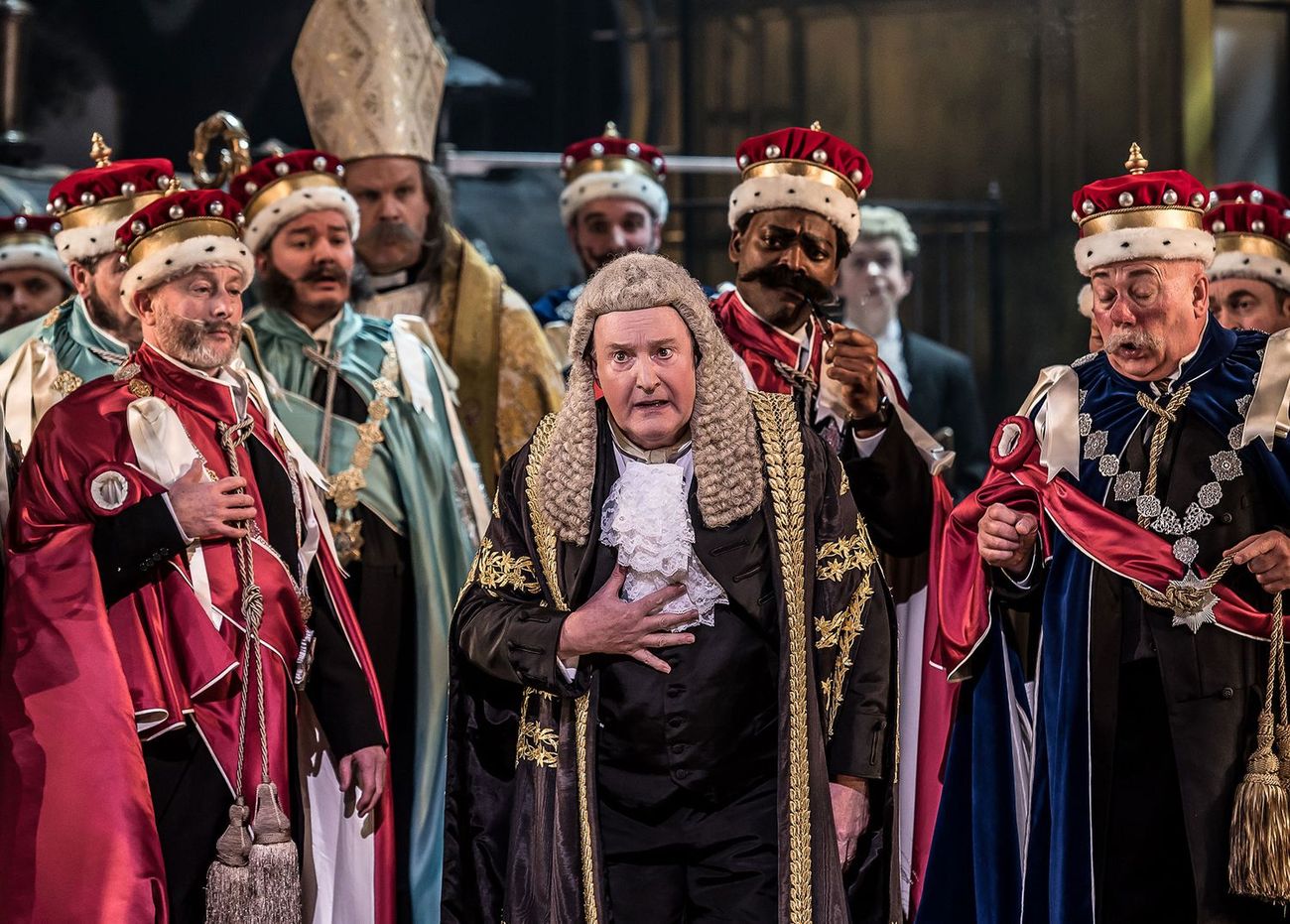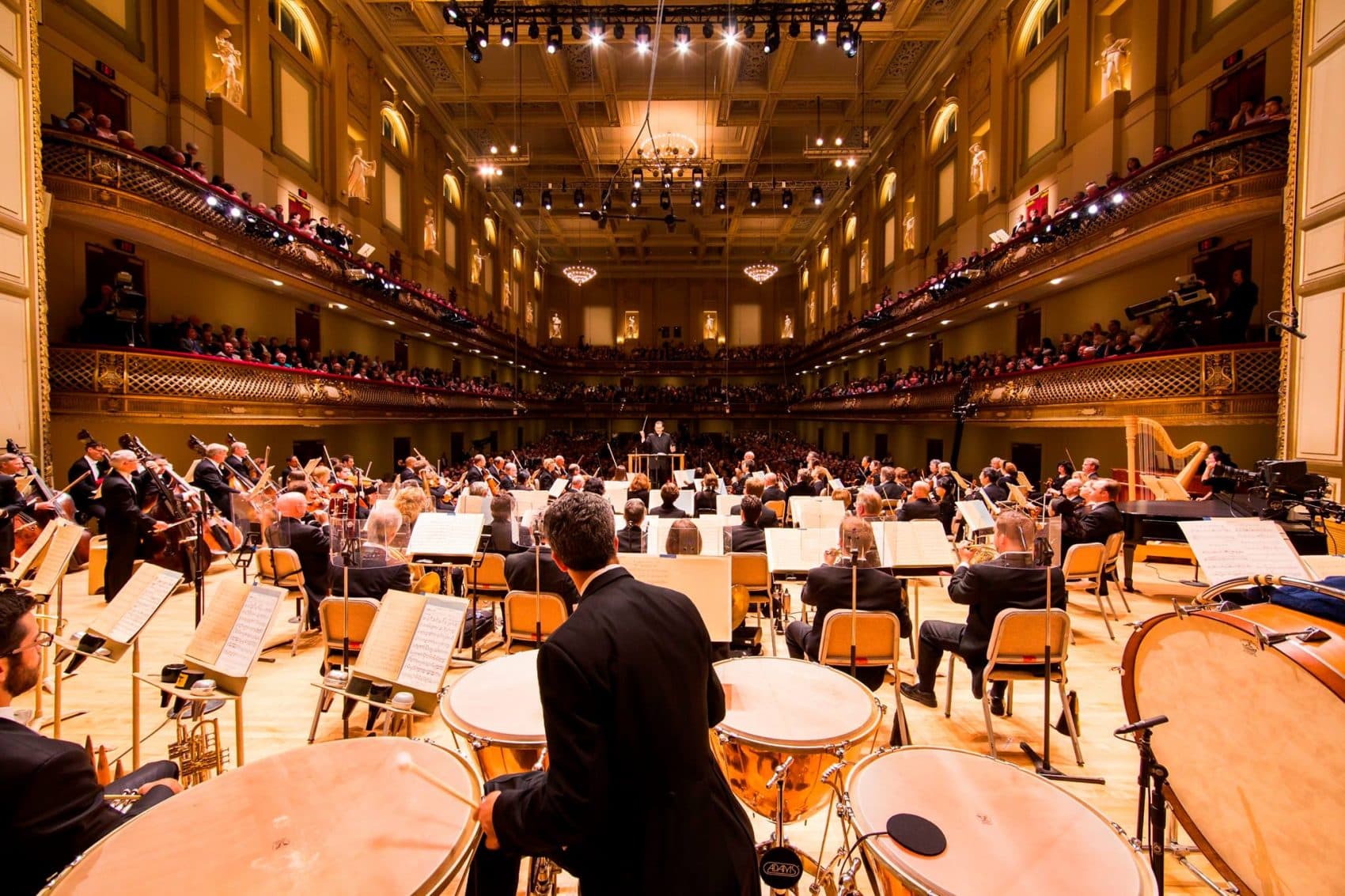Home>Genres>Symphony>What Is The Difference Between Symphony And Orchestra
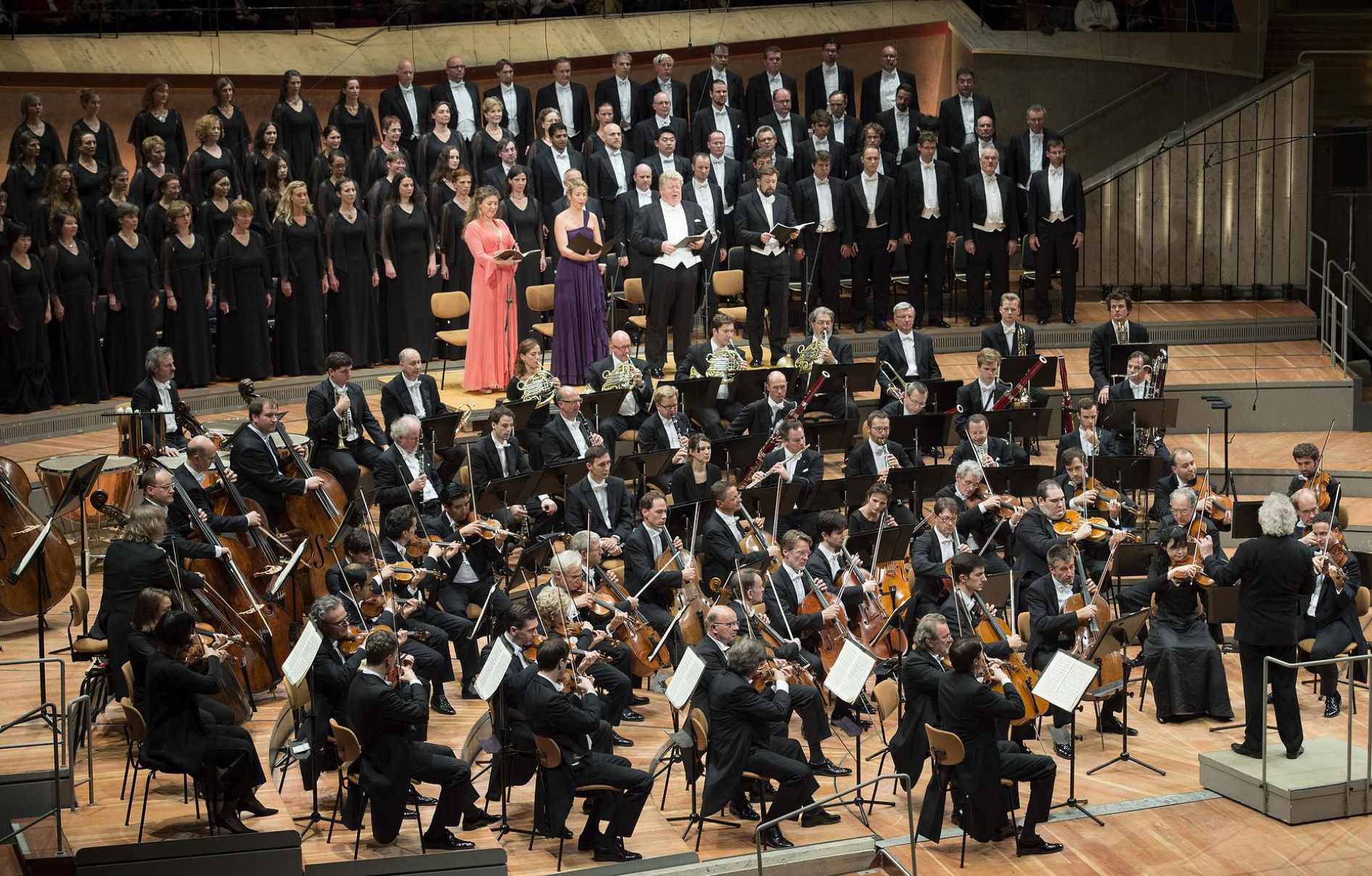

Symphony
What Is The Difference Between Symphony And Orchestra
Modified: February 24, 2024
Discover the distinction between a symphony and an orchestra, with an emphasis on the symphony. Understand the intricacies and role of symphony in the world of classical music.
(Many of the links in this article redirect to a specific reviewed product. Your purchase of these products through affiliate links helps to generate commission for AudioLover.com, at no extra cost. Learn more)
Table of Contents
- Introduction
- Definition of Symphony
- Definition of Orchestra
- Purpose of a Symphony
- Purpose of an Orchestra
- Composition of a Symphony
- Composition of an Orchestra
- Role of Conductor in a Symphony
- Role of Conductor in an Orchestra
- Size of a Symphony
- Size of an Orchestra
- Performance Venue for a Symphony
- Performance Venue for an Orchestra
- Historical Significance of Symphonies
- Historical Significance of Orchestras
- Key Differences between Symphony and Orchestra
- Conclusion
Introduction
When it comes to classical music, two terms that often get used interchangeably are “symphony” and “orchestra”. While they are related, they are not the same thing. Understanding the difference between a symphony and an orchestra can help you appreciate and enjoy classical music even more.
A symphony is a musical composition that is typically divided into multiple movements and is written for an ensemble of musicians. On the other hand, an orchestra refers to the group of musicians who perform together, usually under the guidance of a conductor.
In this article, we will explore the defining characteristics of symphonies and orchestras, including their purpose, composition, roles of conductors, size, performance venues, and historical significance. By the end, you’ll have a clearer understanding of these terms and the important role they play in the world of classical music.
Definition of Symphony
A symphony is a substantial musical composition that is typically divided into multiple movements. It is often written for an orchestra and can feature various instruments, such as strings, woodwinds, brass, and percussion. Symphonies are known for their grand and expansive nature, showcasing the creativity and skill of the composer.
One of the defining characteristics of a symphony is its structure, which usually consists of multiple movements. Each movement is a separate section of the symphony, with its own musical themes and moods. The movements are often contrasted in tempo, dynamics, and style, creating a dynamic and engaging listening experience.
Historically, symphonies were primarily instrumental compositions, without any vocal parts. However, in more modern times, composers have sometimes incorporated vocal sections into symphonies, providing an additional dimension to the musical piece.
It is worth noting that the term “symphony” can also refer to the ensemble that performs the symphony. This usage is more common in informal settings, where “symphony” is often used as a shorthand for a symphony orchestra.
Overall, a symphony is a complex and well-crafted musical work that showcases the composer’s creativity and the orchestra’s ability to interpret and bring the music to life.
Definition of Orchestra
An orchestra is a group of musicians who perform together to create a harmonious and coordinated musical experience. It is typically led by a conductor, who guides and directs the ensemble to ensure unity and precision in their performance.
An orchestra is comprised of various instruments from different musical families, including strings, woodwinds, brass, and percussion. The combination of these instruments allows for a wide range of musical textures and dynamics.
The size of an orchestra can vary, but it generally consists of around 30 to 100 musicians, depending on the specific repertoire and performance requirements. The size of the orchestra can greatly impact the overall sound and intensity of the music.
Orchestras have a rich history and have become synonymous with classical music. They are known for their versatility in performing different musical genres, from symphonies and concertos to operas and ballets.
One of the key features of an orchestra is the role of the conductor. The conductor acts as the musical leader, interpreting the composer’s intentions and guiding the musicians to perform together in a cohesive manner. The conductor’s gestures and cues help the orchestra follow the correct tempo, dynamics, and articulation, resulting in a polished and synchronized performance.
Overall, an orchestra is a dynamic ensemble of talented musicians coming together under the guidance of a conductor to bring a wide range of musical compositions to life, captivating audiences with their collective artistry and skill.
Purpose of a Symphony
The symphony serves various purposes, ranging from artistic expression to entertainment and cultural enrichment. Here are some of the key purposes of a symphony:
- Artistic expression: Symphonies are a means for composers to express their artistic vision and creativity. Through intricate and captivating musical compositions, composers can convey a wide range of emotions, tell stories, and explore different themes.
- Musical exploration: Symphonies allow composers to experiment with different musical forms, structures, and techniques. They can push the boundaries of traditional compositional techniques and create innovative and groundbreaking works.
- Concert performances: Symphony performances provide a platform for orchestras to showcase their technical skills and musical proficiency. These performances serve as a medium for musicians to connect with the audience and create a shared musical experience.
- Cultural preservation: Symphonies play a crucial role in preserving and honoring the cultural heritage of a society. They often draw inspiration from folk music or national themes, helping to preserve and celebrate a nation’s unique musical traditions.
- Aesthetic appreciation: Symphonies can evoke powerful emotions and offer a transcendent listening experience. They have the ability to uplift, inspire, and transport listeners to a different realm of musical beauty.
Ultimately, the purpose of a symphony is multi-faceted. It represents the creative expression of composers, the technical prowess of orchestras, and the emotional journey shared between musicians and audience members. Whether it is through the sheer beauty of the music or the deep emotional impact it carries, symphonies continue to captivate and enchant generations of music enthusiasts.
Purpose of an Orchestra
An orchestra serves a variety of purposes, showcasing the versatility and power of a collective group of musicians. Here are some of the key purposes of an orchestra:
- Interpretation of musical compositions: One of the primary purposes of an orchestra is to interpret and perform a wide range of musical compositions. This includes symphonies, concertos, operas, ballets, chamber music, and more. The orchestra brings these compositions to life through their collective skills and artistry.
- Collaboration with soloists and vocalists: Orchestras often collaborate with solo instrumentalists and vocalists to showcase their talents. The orchestra provides a rich and vibrant musical backdrop for the soloist’s performances, creating a harmonious blend between individual expression and collective musical support.
- Preservation of classical music: Orchestras play a vital role in preserving and promoting classical music. They keep the works of legendary composers alive through their performances and recordings, ensuring that future generations can appreciate and learn from these timeless musical treasures.
- Education and outreach: Many orchestras have educational programs and initiatives to engage with the community and inspire the next generation of musicians. They offer concerts, workshops, and collaborations with schools and community organizations, fostering a love and appreciation for music among people of all ages.
- Cultural representation: Orchestras often serve as ambassadors of their respective cultural heritages. They showcase the unique musical traditions and styles of different regions and cultures, providing a platform for cultural exchange and understanding.
- Entertainment and enjoyment: Perhaps the most immediate purpose of an orchestra is to entertain and provide a mesmerizing and immersive musical experience for the audience. The artistry and precision of the musicians, combined with the grandeur of orchestral compositions, create an unforgettable and awe-inspiring performance.
Ultimately, the purpose of an orchestra extends beyond the stage. It is a catalyst for artistic expression, a source of cultural enrichment, and a bridge between musicians and audiences. The power of an orchestra lies in its ability to captivate, inspire, and unite people through the universal language of music.
Composition of a Symphony
A symphony is composed of multiple movements, each with its own distinct musical themes and characteristics. The composition of a symphony involves careful consideration of various musical elements. Here’s a breakdown of the components that make up a symphony:
- Movements: A symphony is typically structured into three or four movements. Each movement has its own musical ideas, tempo, and mood. The movements are often labeled as follows: the first movement is usually fast and dramatic, the second movement is slower and more lyrical, the third movement is often a dance-like scherzo or minuet, and the fourth movement is a triumphant finale.
- Musical themes: Symphonies are characterized by recurring musical themes or motifs. These themes are introduced, developed, and transformed throughout the course of the symphony, creating a sense of unity and coherence. Composers often use various techniques, such as repetition, variation, and counterpoint, to weave these themes together.
- Orchestration: Orchestration refers to the selection and arrangement of instruments in the symphony. Composers carefully choose which instruments play which parts, taking into consideration the specific timbre, range, and expressive qualities of each instrument. This orchestration allows for a rich and balanced sound, as well as dynamic contrasts within the symphony.
- Harmony and counterpoint: Symphonies utilize harmonies and counterpoint to create depth and complexity. Harmonies refer to the vertical relationships between chords, while counterpoint involves the interplay of multiple melodic lines. Composers carefully craft these harmonic and contrapuntal elements to evoke different emotional responses and enhance the overall musical experience.
- Dynamics and articulation: Dynamics and articulation add nuance and expression to the performance of a symphony. Composers indicate the desired loudness or softness (dynamics) and the specific manner of playing each note (articulation) through markings such as crescendos, decrescendos, staccatos, legatos, and more. These markings guide the orchestra in shaping the phrasing and creating a compelling rendition of the music.
The composition of a symphony involves a careful balance between structure and creativity. Composers strive to create a cohesive and impactful musical narrative that engages and transports the listener throughout the different movements of the symphony.
Composition of an Orchestra
An orchestra is composed of a diverse range of instruments from different musical families, each playing a unique role in creating a harmonious and balanced sound. The composition of an orchestra involves selecting instruments from various sections. Here’s a breakdown of the components that make up an orchestra:
- Strings: The string section forms the foundation of the orchestra. It includes instruments such as the violin, viola, cello, and double bass. These instruments provide the melodic and harmonic framework, creating lush and expressive textures.
- Woodwinds: The woodwind section consists of instruments like the flute, oboe, clarinet, and bassoon. These instruments bring a wide range of colors and expressive possibilities to the orchestra, with their rich tones and expressive capabilities.
- Brass: The brass section is comprised of instruments like the trumpet, French horn, trombone, and tuba. Brass instruments contribute powerful and majestic sounds, adding brightness and depth to the orchestral sound.
- Percussion: The percussion section includes instruments like the timpani, snare drum, cymbals, and xylophone. Percussion instruments provide rhythmic drive, accents, and a diverse range of atmospheric effects to the orchestra.
- Keyboard instruments: Some orchestras include keyboard instruments, such as the piano or the harp. These instruments add versatility and color to the overall sound, enhancing the orchestral palette.
- Others: Depending on the specific repertoire, an orchestra may include additional instruments such as the celesta, organ, or various auxiliary percussion instruments. These instruments are used to create specific effects or capture certain musical styles.
The combination of these instruments allows for a rich and varied sonic palette, with different sections blending together to create a unified and cohesive sound. The composer’s score specifies which instruments play which parts and ensures the proper balance and coordination within the orchestra.
An orchestra’s composition can vary in size, with smaller chamber orchestras having fewer musicians, while larger symphony orchestras can comprise over a hundred musicians. The diverse range of instruments and the skillful coordination among the musicians are what make an orchestra a truly remarkable ensemble.
Role of Conductor in a Symphony
The conductor plays a crucial role in a symphony performance, acting as the musical leader who guides and shapes the interpretation of the music. Here’s an overview of the key responsibilities of a conductor in a symphony:
- Interpretation and vision: A conductor is responsible for interpreting the composer’s intentions and bringing their own artistic vision to the performance. They study the score meticulously, analyzing the musical structure, dynamics, phrasing, and nuances, and then communicate their interpretation to the musicians.
- Providing direction: During rehearsals and performances, the conductor gives clear direction to the musicians, using gestures, facial expressions, and eye contact to convey musical instructions. They set the tempo, cue entrances, indicate dynamics, and shape the overall musical expression.
- Cueing and coordination: The conductor ensures the precise coordination and synchronization among the different sections of the orchestra. They cue in various instruments or sections, facilitating smooth transitions, balancing the sound, and maintaining a cohesive performance.
- Interpretive decisions: The conductor makes interpretive decisions in real-time, adjusting the tempo, dynamics, and phrasing to create a compelling and expressive performance. They have the flexibility to emphasize certain musical elements or bring out the nuances of the composition, effectively shaping the emotional impact of the music.
- Communication and inspiration: A conductor communicates their artistic vision and inspires the musicians to bring out their best performance. They use their communication skills to motivate and encourage the musicians, fostering a collaborative and supportive environment for artistic expression.
- Leading rehearsals: Prior to the performance, the conductor leads rehearsals to refine the interpretation, address technical challenges, and ensure a unified sound. They work closely with the musicians, guiding them through detailed rehearsals to achieve a polished and cohesive performance.
The role of a conductor in a symphony is far beyond simply keeping the musicians together; they are the driving force behind the artistic vision and execution of the performance. The conductor’s expertise and leadership bring the music to life, allowing the symphony to reach its full potential.
Role of Conductor in an Orchestra
The conductor plays a crucial role in an orchestra, serving as the artistic leader who guides and unifies the ensemble’s performance. Here’s an overview of the key responsibilities of a conductor in an orchestra:
- Interpretation and vision: One of the primary roles of a conductor is to interpret the composer’s intentions and bring their own artistic vision to the performance. They study the score thoroughly, analyzing the musical structure, dynamics, phrasing, and nuances, and then communicate their interpretation to the musicians.
- Providing direction and cueing: During rehearsals and performances, the conductor provides clear direction to the musicians, using gestures, facial expressions, and baton movements to cue entrances, indicate tempo changes, and shape the overall musical expression. Their precise conducting technique helps the musicians stay coordinated and synchronized.
- Ensuring balance and dynamics: The conductor is responsible for balancing the different sections of the orchestra, ensuring that no single instrument or section overpowers the others. They adjust the volume and dynamics, bringing out the desired tonal qualities at different points in the music, creating a well-blended and harmonious sound.
- Expressive interpretation: A conductor shapes the expressive interpretation of the music, guiding the musicians to bring out the emotional depth and subtleties in the compositions. They make interpretive decisions on aspects like phrasing, articulation, and dynamics to convey the intended mood and evoke a specific emotional response from the audience.
- Rehearsing and refining: Before a performance, the conductor leads rehearsals to refine the interpretation, address technical challenges, and ensure cohesive ensemble playing. They work closely with individual musicians and sections, providing guidance, feedback, and encouragement to achieve a unified and polished performance.
- Unifying the ensemble: The conductor acts as a unifying force, bringing together musicians with different individual talents to perform as a cohesive ensemble. They create a sense of unity and teamwork, fostering trust, collaboration, and mutual respect among the musicians.
The role of a conductor in an orchestra extends beyond simply keeping time or indicating entries; they are the guiding force behind the artistic vision and execution of the performance. Through their leadership and expertise, they inspire and elevate the orchestra to create magnificent and captivating musical experiences for the audience.
Size of a Symphony
The size of a symphony can vary depending on various factors, including the specific composition and the preferences of the composer. Symphonies can range in size from a small chamber orchestra to a full-sized symphony orchestra. Here’s a breakdown of the different sizes of symphonies:
- Chamber orchestra: A chamber orchestra is the smallest type of symphony ensemble. It typically consists of around 10 to 40 musicians, with one player per part. Chamber orchestras are known for their intimate and nuanced performances, often specializing in Baroque or Classical repertoire.
- Small-sized symphony orchestra: A small-sized symphony orchestra is slightly larger than a chamber orchestra, typically comprising around 40 to 60 musicians. These orchestras have a broader range of instruments, including a fuller string section, woodwinds, brass, and percussion. They are capable of performing a wider range of repertoire, including Romantic and early 20th-century compositions.
- Medium-sized symphony orchestra: A medium-sized symphony orchestra usually consists of around 70 to 90 musicians. With a more substantial string section, augmented wind and brass sections, and a variety of percussion instruments, medium-sized orchestras have the capability to tackle more complex and demanding repertoire.
- Full-sized symphony orchestra: A full-sized symphony orchestra is the largest type of symphony ensemble, typically boasting over 100 musicians. These orchestras have a robust string section, a wide array of woodwinds, brass, and a comprehensive percussion section. Full-sized symphony orchestras are known for their powerful and grandiose performances of symphonic works from the Classical, Romantic, and contemporary eras.
The size of a symphony orchestra can greatly impact the overall sound and expressive capabilities of the ensemble. Larger orchestras often provide a richer and more potent sound, allowing for greater dynamic range and more expansive orchestration. However, smaller ensembles can offer a more intimate and nuanced interpretation of the music.
It is important to note that the size of a symphony can also depend on practical considerations, such as the performance venue and the availability of musicians. Regardless of their size, symphonies continue to captivate audiences with their remarkable performances and the sheer power and beauty of their collective sound.
Size of an Orchestra
The size of an orchestra can vary depending on the specific repertoire, the preferences of the conductor, and the requirements of the musical composition. Orchestras can range in size from small ensembles to large symphony orchestras. Here’s an overview of the different sizes of orchestras:
- Chamber orchestra: A chamber orchestra is the smallest type of orchestra, typically consisting of around 10 to 40 musicians. It is known for its intimate and nimble performances, with a focus on repertoire from the Baroque and Classical periods.
- Small-sized orchestra: A small-sized orchestra comprises around 40 to 60 musicians. It has a broader instrumentation, including a fuller string section, woodwinds, brass, and percussion. Small-sized orchestras have the flexibility to perform a variety of repertoire from different musical periods.
- Medium-sized orchestra: A medium-sized orchestra typically has around 70 to 90 musicians. It features a more substantial string section, expanded woodwind and brass sections, and an array of percussion instruments. Medium-sized orchestras are capable of tackling complex symphonic works and performing a diverse range of styles and genres.
- Full-sized symphony orchestra: A full-sized symphony orchestra is the largest type of orchestra, often consisting of over 100 musicians. It has a powerful string section, a wide range of woodwinds, brass, and an extensive percussion section. Full-sized symphony orchestras are renowned for their ability to perform grand symphonic works with richness, depth, and versatility.
The size of an orchestra greatly impacts its sonic capabilities and the diversity of its repertoire. Larger orchestras offer a greater dynamic range, a wider tonal palette, and the ability to tackle complex and demanding compositions. Smaller ensembles, on the other hand, can provide a more intimate and nuanced interpretation of the music.
It’s important to note that the size of an orchestra can also vary based on practical factors, such as the performance venue and budget constraints. Orchestras can adapt their size to suit the requirements of a specific piece or performance setting.
Regardless of their size, orchestras continue to captivate audiences with their mastery, precision, and ability to evoke a wide range of emotions through their collective performance. They are instrumental in bringing the beauty and power of orchestral music to life.
Performance Venue for a Symphony
The performance venue for a symphony plays a significant role in enhancing the overall musical experience and capturing the essence of the performance. Here are some common venues where symphonies are often performed:
- Concert Halls: Concert halls are purpose-built venues specifically designed for orchestral performances. These halls are acoustically optimized to provide the best possible sound quality and resonance. They often have a sloped seating arrangement, allowing for a clear view of the stage from every seat, ensuring an immersive and engaging listening experience.
- Opera Houses: Opera houses are traditional venues that are known for hosting symphonic performances, in addition to opera productions. With their ornate architecture and grand stages, opera houses lend a sense of elegance and grandeur to symphony performances.
- Outdoor Venues: Some symphony performances take place in outdoor venues, such as parks, amphitheaters, or open-air arenas. These venues offer a unique atmosphere, allowing audiences to enjoy the music in a more relaxed and informal setting, often accompanied by a picnic or outdoor activities.
- Community Centers: Community centers, town halls, and auditoriums are popular venues for symphony performances, especially in smaller towns or local communities. These venues provide a more intimate and accessible setting for audiences to enjoy the music.
- Concert Series: Many symphony performances are organized as part of concert series held in various venues such as universities, performing arts centers, or cultural institutions. These series often offer a diverse range of music programs, attracting a wide range of audience members.
- Touring and Special Events: Symphonies also perform in unique settings such as corporate events, festivals, and special occasions. These performances may take place in unconventional venues such as museums, historical sites, or even sports arenas, adding a distinctive touch to the concert experience.
The choice of performance venue depends on several factors, including the size and reputation of the symphony, the nature of the program, and the preferences of the conductor and the organization. Regardless of the venue, symphony performances provide a captivating and awe-inspiring experience, transporting audiences to a world of musical beauty and expression.
Performance Venue for an Orchestra
The choice of performance venue for an orchestra greatly impacts the overall experience and ambience of the concert. Here are some common venues where orchestras often perform:
- Concert Halls: Concert halls are purpose-built venues that provide optimal acoustics and seating arrangements for orchestral performances. These venues are specifically designed to enhance the sound quality and ensure an immersive experience for the audience. Concert halls often feature a stage that can accommodate a large orchestra and offer excellent sightlines and sound distribution.
- Symphony Halls: Symphony halls are prestigious venues specifically designed to host symphonic performances. These halls prioritize acoustic excellence and offer state-of-the-art sound systems, enabling orchestras to showcase their full potential. Symphony halls often have large seating capacities and aesthetically pleasing designs.
- Opera Houses: Many orchestras also perform in opera houses, which, beyond opera productions, provide a versatile setting for symphony performances. Opera houses often feature larger stages capable of accommodating the expanded size of an orchestra. Their grand and ornate interiors contribute to the overall ambiance of the performance.
- Outdoor Venues: Orchestras sometimes perform in outdoor venues, such as parks, amphitheaters, or arenas. These venues provide a unique and relaxed atmosphere, allowing the audience to enjoy the music in an open-air setting. Outdoor performances often attract larger crowds and may be accompanied by picnics or other outdoor activities.
- Community Centers and Auditoriums: In smaller towns or local communities, orchestras may perform in community centers, town halls, or auditoriums. These venues offer a more intimate setting, fostering a sense of connection between the orchestra and the local community.
- Special Events and Touring: Orchestras sometimes perform in special events, such as festivals, cultural celebrations, or corporate gatherings. These performances can take place in unconventional venues like museums, historical sites, or even unusual locations, providing a unique concert experience for the audience.
The choice of performance venue depends on various factors, including the size and reputation of the orchestra, the nature of the program, and the availability of suitable venues. Regardless of the venue, the performance space serves as a backdrop for the orchestra’s artistry, creating an atmosphere where the music can resonate and captivate the audience.
Historical Significance of Symphonies
Symphonies hold great historical significance, representing pivotal moments in the development of classical music and Western musical tradition. Here’s a glimpse into the historical significance of symphonies:
- Baroque era: In the Baroque era, the concept of the symphony emerged as an instrumental form that consisted of multiple contrasting movements. Early symphonies, such as those by Giovanni Battista Sammartini and Johann Stamitz, paved the way for the symphonic tradition that would flourish in later periods.
- Classical era: The symphony came to full fruition during the Classical era with the works of prominent composers like Joseph Haydn, Wolfgang Amadeus Mozart, and Ludwig van Beethoven. These composers expanded the symphonic form, solidifying its structure and establishing symphonies as one of the most important genres of orchestral music.
- Romantic era: The Romantic era witnessed a further evolution of the symphony. Composers like Franz Schubert, Felix Mendelssohn, and Pyotr Tchaikovsky pushed the boundaries of symphonic writing, infusing their compositions with deep emotional intensity, expansive orchestration, and dramatic storytelling. Some of the most beloved and influential symphonies were composed during this period.
- 20th century and beyond: In the 20th century, composers like Gustav Mahler, Dmitri Shostakovich, and Igor Stravinsky continued to innovate the symphonic tradition. They experimented with non-traditional structures, tonalities, and even introduced elements of folk music and jazz into their symphonic works. Additionally, film scoring and contemporary classical composers have contributed to the expansion and ongoing development of the symphonic repertoire.
The symphony has served as a platform for composers to delve into complex musical ideas, push the boundaries of composition, and express their deepest emotions. It has also allowed orchestras to showcase their technical prowess and ensemble playing, captivating audiences with the power and beauty of the music.
Moreover, symphonies have played a crucial role in shaping cultural and societal landscapes. They have been used to commemorate significant events, express patriotic sentiments, and serve as a reflection of the prevailing artistic and intellectual movements of their time.
With their rich history and profound impact on the world of music, symphonies continue to be celebrated and cherished as masterpieces of the classical repertoire, standing as testaments to the enduring power of orchestral music.
Historical Significance of Orchestras
Orchestras have a rich and storied history, playing a vital role in the development and dissemination of classical music throughout the centuries. Here’s a glimpse into the historical significance of orchestras:
- Ancient and Medieval times: The roots of orchestras can be traced back to ancient civilizations, where various ensembles of musicians performed at religious ceremonies and courtly events. In medieval times, minstrels and troubadours formed early versions of orchestras, providing entertainment for noble courts and royal gatherings.
- Baroque era: The establishment of orchestras as we know them today began in the Baroque era. Noble courts and churches employed larger ensembles to perform intricate instrumental music, including written works by composers such as Johann Sebastian Bach and Antonio Vivaldi. This era marked the shift from smaller chamber ensembles to larger orchestral groups.
- Classical era: The Classical era saw the rise of symphony orchestras as permanent institutions. Composers like Joseph Haydn and Wolfgang Amadeus Mozart composed symphonies specifically for these orchestral ensembles. Orchestras became more structured and standardized, with clearer divisions among musical sections.
- Romantic era: During the Romantic era, orchestras expanded in size and scope, enabling composers like Ludwig van Beethoven, Richard Wagner, and Johannes Brahms to explore more expressive and monumental works. Orchestral music became more emotionally charged, with larger string sections, expanded woodwind and brass sections, and increased dynamic range.
- Modern era: In the 20th century, orchestras continued to evolve. They embraced new musical styles and techniques, incorporating elements of jazz, folk, and even electronic music. Orchestras also played a significant role in the development of film music, performing and recording iconic movie scores.
Aside from their musical contributions, orchestras have had a profound impact on society. They have been associated with cultural identity, serving as symbols of national pride and artistic achievement. Orchestras have also played a crucial role in educating young musicians, nurturing talent through youth orchestra programs and music education initiatives.
The historical significance of orchestras cannot be overstated. They have provided a platform for composers to create and share their masterpieces, and they continue to bring people together to experience the transformative power of live orchestral performances. Orchestras are a testament to the enduring power of collective artistry and the timeless beauty of orchestral music.
Key Differences between Symphony and Orchestra
While the terms “symphony” and “orchestra” are often used interchangeably, there are distinct differences between the two. Here are the key differences that set them apart:
- Definition: A symphony refers to a substantial musical composition that is typically divided into multiple movements. An orchestra, on the other hand, is a group of musicians who perform together.
- Purpose: The purpose of a symphony is to serve as a musical composition, expressing the composer’s artistic vision and creativity. An orchestra, on the other hand, exists to perform various musical works, including symphonies, as well as concertos, operas, and other genres.
- Composition: A symphony is composed of multiple movements, each with distinct musical themes and characteristics. An orchestra, on the other hand, is composed of a variety of instruments from different musical families, such as strings, woodwinds, brass, and percussion.
- Role of Conductor: In a symphony, the conductor plays a vital role in interpreting and shaping the performance, ensuring unity among the musicians. In an orchestra, the conductor also fulfills a similar role, guiding and coordinating the ensemble, but may have a broader range of repertoire to conduct.
- Size: The size of a symphony can vary, ranging from small chamber orchestras to full-sized symphony orchestras. An orchestra’s size can also vary, with different ensembles falling into categories like chamber orchestra, small-sized orchestra, medium-sized orchestra, or full-sized symphony orchestra.
- Performance Venue: Symphonies are typically performed in dedicated concert halls or opera houses, designed to enhance the acoustic experience. Orchestras, on the other hand, can perform in various venues, including concert halls, community centers, outdoor venues, and touring locations.
- Historical Significance: Symphonies hold historical significance as pivotal works in the development of classical music, while orchestras have played a significant role in the dissemination and performance of orchestral music throughout history.
Understanding the differences between symphony and orchestra allows for a deeper appreciation of the complexities and unique aspects of each. Symphonies represent a specific type of musical composition, while orchestras encompass the ensemble of musicians who bring various musical works to life. Together, they contribute to the rich and diverse world of classical music.
Conclusion
The distinction between a symphony and an orchestra is essential to fully grasp the world of classical music. While the terms are sometimes used interchangeably, they have distinct meanings and roles within the realm of music.
A symphony is a substantial musical composition divided into multiple movements. It serves as a platform for composers to express their artistic vision and creativity. Symphonies have a rich history and have played a significant role in the development and cultural preservation of classical music.
On the other hand, an orchestra refers to the group of musicians who perform together to bring a wide range of musical works to life. Orchestras are diverse ensembles composed of string, woodwind, brass, and percussion instruments. They have the versatility to perform symphonies, concertos, operas, and other genres.
The role of the conductor is crucial to both symphonies and orchestras. The conductor provides interpretation, direction, and coordination, ensuring a unified and expressive performance. They are the guiding force behind the artistic vision and execution of the music.
Whether performed in concert halls, outdoor venues, or community centers, symphonies and orchestras create captivating and transformative musical experiences. They have a rich historical significance, shaping the course of classical music and serving as cultural ambassadors throughout the centuries.
Understanding the key differences between symphonies and orchestras enables us to appreciate the unique aspects of each. The symphony embodies the compositional form, while the orchestra brings the music to life. Together, they continue to captivate audiences, evoking deep emotions and celebrating the enduring power and beauty of orchestral music.

